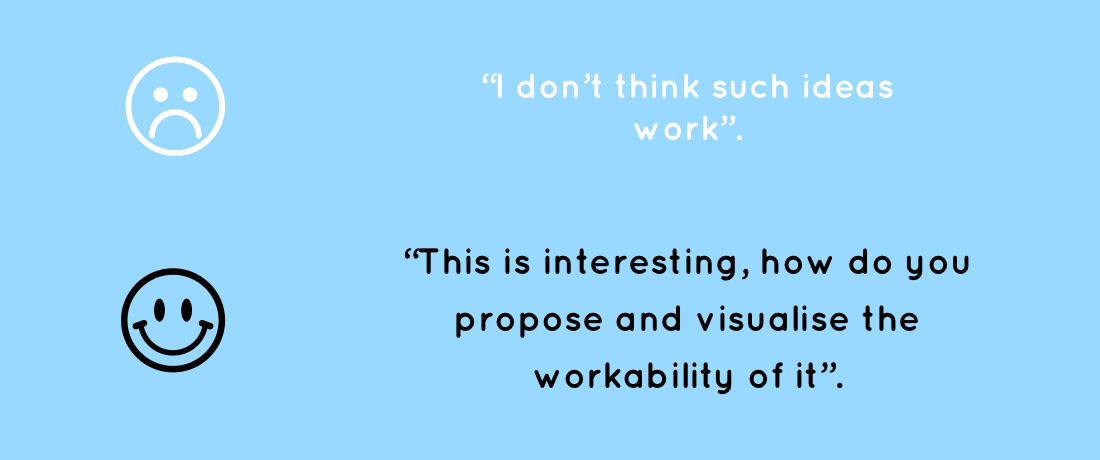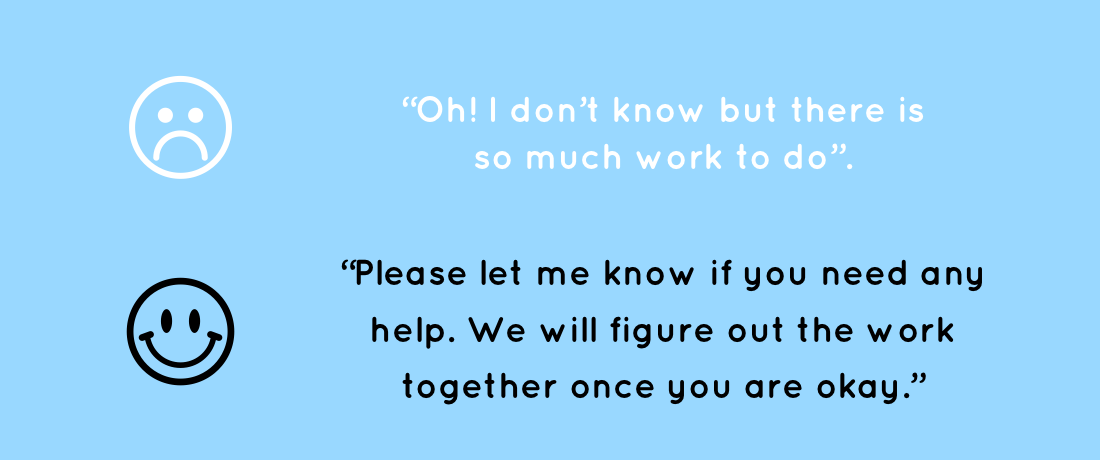Design and soft skills are deeply connected. Design teams should embrace this obvious fact and work in the direction of enabling team members to reach their full potential. Rather than encouraging team members to work individually design leads should embrace the need to celebrate the differences and encourage teamwork.
Encouraging individual work, stereotypes and not working as a team is a way of encouraging a particular way of thinking. This usually restrains team members from critical thinking, diversity of teamwork, ability to face criticism and preventing them from creating the best out of the design process.
A Great product comes into existence when the team faces challenges together.
It’s often stated that the quietest person in the room is the wisest. But how do you balance that in a team? How do you increase the collaborations during meetings when the loudest is evaluated as the most competent. So what are the ways to ensure everyone's participation and an equal chance to grow and contribute? That’s where the soft skills come in.
In this blog post, we will cover the different ways to enable positive teamwork through soft skills.
Be an Active Listener
Active listening is focusing on what the other person has to say instead of thinking about what to say next.
The skillset of active listening positively influences the relationship with clients, leads to a productive group discussion with team members, helps to gather feedback from users, and gaining insights from other colleagues.
In a Harvard Bussiness Review, What Great Listeners Actually Do is a great read for anyone working on their listening ability. Some of the major liners from the article are —
- The best conversations are active.
- Issues and differences should be discussed openly.
- Question to demonstrate your understanding or to clarify things that they have said.
- The person being listened should feel that the listener is trying to help, not wanting to win an argument.
- Credible feedbacks are important throughout the discussion.
- Capture ideas, ask questions and restate issues to confirm that the understanding is correct.

Keep an Open Mind
Not all ideas during the discussion may seem workable or worth investing time in, but explorations and refinements are an unmissable part of the design process. Keeping an open mind can fuel this step.
An open-minded design discussion within the team is being willing to consider different approaches and different ways of thinking. It is being flexible and adapting new ideas and experiences. A designer with an open mind is a critical thinker, reasons creativity with logics and embraces the unexplored ways of doing things.
Open-minded design teams can be receptive to more than one potential solutions and figure out alternative methods to solve design problems. They pave a way for creativity to flow in naturally.

Empathize
“Empathy” is the first stage of the Design Thinking process, it means putting ourselves in the user’s shoes which can also be used within the design team and clients.
Empathy in a team is developed through active listening and observing. This skill needs curiosity and sincerity to create a connection while working together. Unlike with users, this doesn't require an analytical survey or detailed research. The skill to empathise with the people you are working with can be acquired through daily interactions.
It comes in naturally as you interact, understand and identify with each other's life, context and feelings, this way you will able to gain more emphatic ideas from each other and indulge in transparent discussions.

Communicate Effectively
When we send an email, slack messages, snail mail or text to a colleague when you have zoom meetings and conference calls with the client it’s a skill to communicate yourself with clarity and politeness.
By clarity, it is to communicate in a way that requires fewer efforts from the other person to understand. By politeness is it to not cut off another person in the middle of a discussion, don't prove a point by proving your colleague wrong. The competition is not within the team, it's to deliver a unique experience and delivering a product as per the user's needs. It's important to make a switch from "I to We".
Make every piece of communication a seamless experience. This skill is essential because how you communicate, present your work and ideas really changes the way people perceive you as a professional. As you make it more enjoyable and stressfree it improves your credibility as a designer.

Embrace Change
In the ever-evolving world of design, it is important for designers to embrace change and learn from them. Changes being the only constant shape the world around us. They shape our work culture and the users we design for. They shape the user insights and mindsets. To provide a great experience it’s important to understand these changes and their effects.
In the post pandemic work scenario both employees and employers are likely to support remote work and will be continuing the work from home practice even after. These situations suggest new changed users and new researches to study their still evolving preferences, behaviour and the need to design accordingly.
They also suggest that we embrace these changes as a part of teamwork and support the team member’s journeys through the same.
Initiate Change by Learning
The Design industry isn't solely dependent on fancy degrees or credentials — some success is based on hard work, self-improvements, learnings, work ethics and consistency.
Self-learning helps when one encounters problems with new software, jargons, programs, management, organizing and so on. By enabling design with skills and willpower a designer can learn and contribute efficiently to their team and projects.
Initiate changes, introduce your new learnings and lead by example for everyone around you to grow. There is nothing that the internet doesn't know. It only requires intent, self-discipline and curiosity to grow at your own volition.
Feedback
Effective feedback should be clear, constructive and specific. It's a critical skill. Constructive feedback isn’t just about what you say, it’s about how implementable is the feedback you are suggesting.
The art of constructive feedback is in being able to empathize with others while also empathizing with the needs of a project. Non-constructive feedbacks can be uncomfortable for many designers.
Designers play a big part in improving the way feedbacks are processed and given. Instead of assumptions raise questions based on past experiences with the stakeholders and projects. Provide a base to your feedback with logical examples.
Lack of awareness of basic feedback skill would sound like "can you make it more interesting?" whereas constructive feedback would sound like "the images used on the career page are not representing our work culture. Let's show ourselves as a transparent, playful and relaxed agency to connect better with the candidates we hope to attract with it".
Be polite and make sure to offer a possible solution to the problem being addressed in the feedback.

Understand the core values
Understanding business values and user needs and finding the middle ground between them should be a part of a designer's skill set. It should come naturally after some projects and should be made accessible, presented during design discussion with the team.
Design leads should be able to speak to business needs and address them during the discussions. It's crucial that everyone on board in the project should evaluate how they can contribute and do their part to encourage business growth.

Respect Boundaries
Workplace boundaries define and develop a meaningful relationship between team members, clients, managers and other colleagues while also maintaining positive personal energy and flexible limits at work.
Mentioning some favourites from an article from Quartz, How to set healthy boundaries at work —
- With communication and practice, you can learn to set self-honouring limits without alienating people or losing your paycheck.
- Make a request of yourself or another person about what needs to change.
- You need to understand the other person’s needs and desires in addition to being up-front about your own perspective.
- Building boundaries takes time and practice.
Once you understand your team members boundaries and convey yours, respect them. How you value someone’s boundaries and maintain says a lot about your professionalism and work ethics.
Forgiveness
Holding on to a mistake encourages negativity, lack of collaboration, disorientation during discussions and passive-aggressive behavioural issues. When people in an organisation remember every small slip, they cause more harm to the team than the person who did or did not do the mistake. Such environments lead to work cultures based on blame and resentment.
Forgiveness doesn't mean lowering the bar — it indeed creates a safe place for excellence to dwell in an organisation. Forgiveness fuels positivity, amiable group discussion and productivity.
A study by the American Journal of Health Promotion promotes the power of forgiving to improve well-being and productivity at a workplace. Another article suggests the inability to forgive negatively affects individuals and organizations as a whole. It is important to sort a grudge and collaborate in a healthy work environment.

There are many more soft skills than those discussed here. To be a successful designer you have to work and develop both, hard and soft skills and create a positive work environment for your team members. A view that includes varied perspectives of the whole team, as well as project managers, developers and anyone who aspires to contribute should we respected and listened to. That’s how you lay a strong foundation of teamwork and that’s how sustainable ideas originate.

